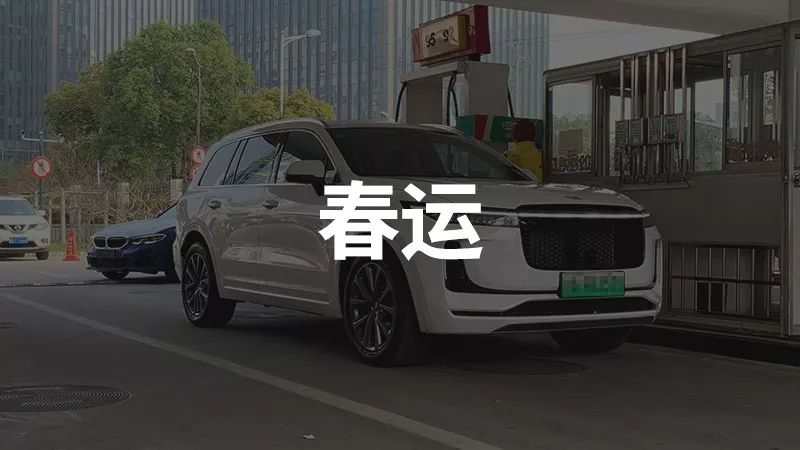Spring Festival Travel Rush 2020
The annual Spring Festival Travel Rush has arrived as scheduled, and my colleagues at the company have started to return home one after another from the 18th, including taking planes, high-speed trains, and driving themselves.
As a relatively close employee to the company, I participated in this New Year’s homecoming wave with my Ideal ONE.
This year’s Spring Festival coincides with the outbreak of the new coronavirus pneumonia. Our colleague Dawei repeatedly reminded us in the group to buy enough masks before going home, and to be careful on the way home. Fortunately, I will be able to avoid the crowded high-speed railway stations or airports by driving myself home.
I hope all friends who are still on the road can arrive home safely.
Ideal ONE is a car that I paid close attention to in 2019. Although I participated in every test drive event, I still have many questions about the working logic of this range extender system, especially the new hybrid mode. How does the system balance “electric energy preservation” and “fuel consumption control” under highway and urban driving conditions? How long does it take to recharge the car in daily use?
Fortunately, I was able to drive Ideal ONE back home for an in-depth experience this time. During the half-month of using this car, I will look at its performance from the perspective of a “user without a home charging station”.
First, let me introduce the test drive car that we got:
Due to the license plate problem, we got a 2019 P2-1 version car, not the final 2020 mass-produced version. The differences between the two versions of the car are all concentrated in the following hardware:
-
No double-layer sound insulation glass for the second row
-
No variable air intake grille
-
No chrome-plated grille trim
-
Michelin PRIMACY tires without silent sponge
-
No induction tailgate
-
With a second-row double armrest
-
Older version of the suspension and brake system
As the mass-produced version has re-tuned the suspension and brake system, I will not evaluate the driving experience of the vehicle in this article. Friends who are curious about the driving control and the above hardware changes can refer to my article on the 2020 Ideal ONE test drive in November: One article to show you all the changes, the nationwide trial of 2020 Ideal ONE.If you have no idea about the ideal ONE, you can read this article: 24 questions, 8000 words to solve all your doubts about ideal ONE.
However, don’t worry, because the software version of this car has been updated to the latest 1.0.6, and the three driving modes, assisted driving system, and the car system are the same as the production version. Therefore, for friends who are concerned about the energy consumption, assisted driving, and software stability, its performance is still worth referring to.
After introducing the vehicle, we began our 400-kilometer-high-speed Spring Festival trip.
Ideal ONE is a range-extended new energy vehicle that can be powered by electric and fuel. Therefore, I didn’t worry about energy-related issues. Besides, I have traveled several times back and forth on the Shanghai-Kunming expressway, and I am familiar with the road conditions and service areas along the way. Therefore, I did not need to prepare anything before departure, just pick the auspicious date, the 20th, to start the journey.
Before departure, I washed the car thoroughly to avoid expensive washing later.
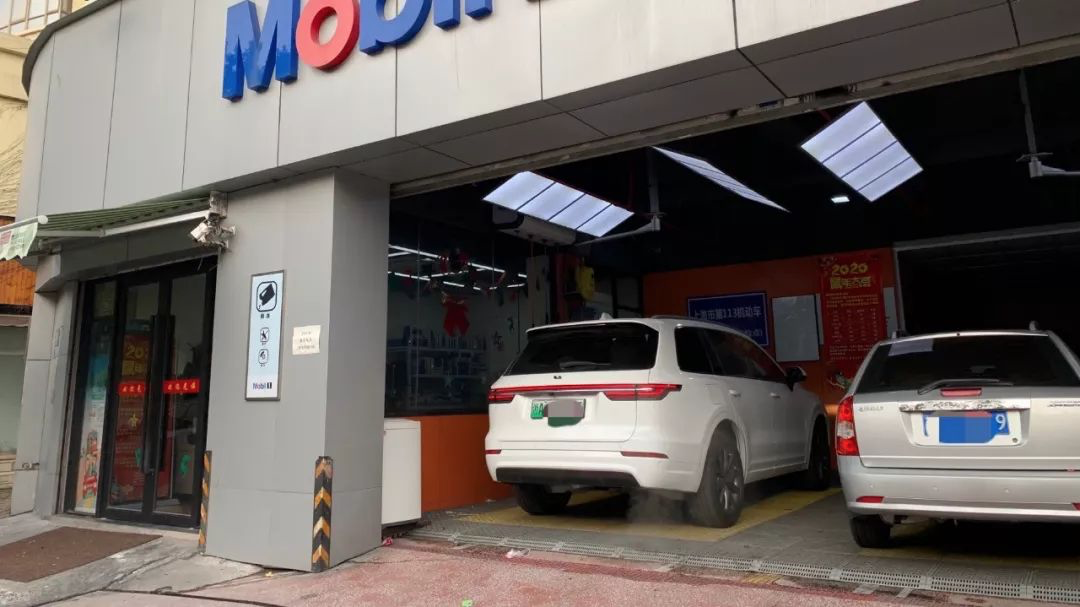
After washing the car, I picked up the luggage, which was not much for two people, and putting them in the open third-row seats.
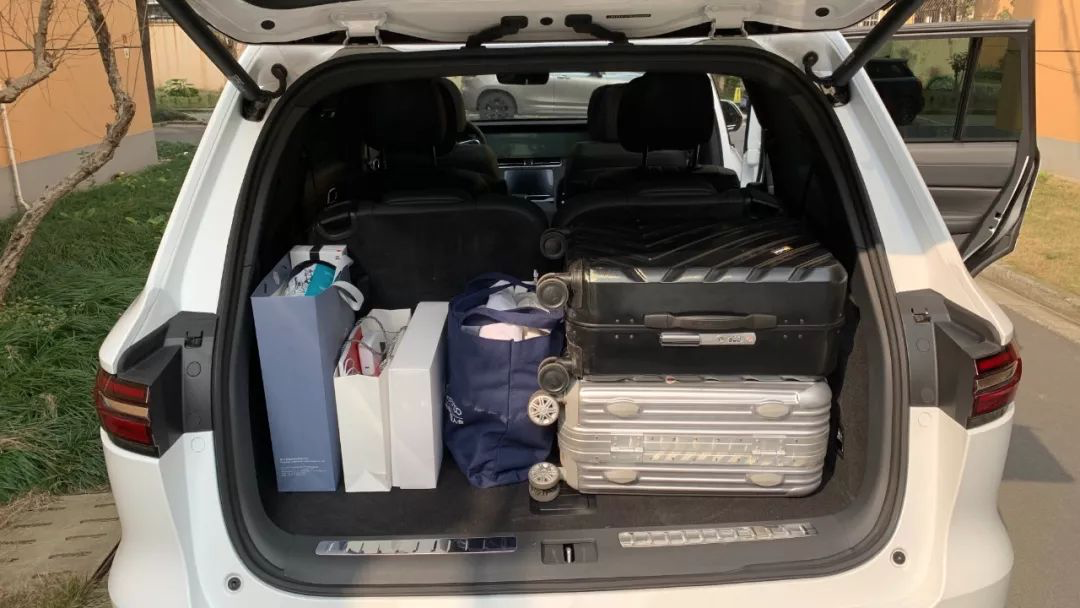
Originally, I planned to leave at 1 pm, but I received a message to go to the company, and the exit near Wuzhong Road on the Inner Ring Elevated Road was still congested.
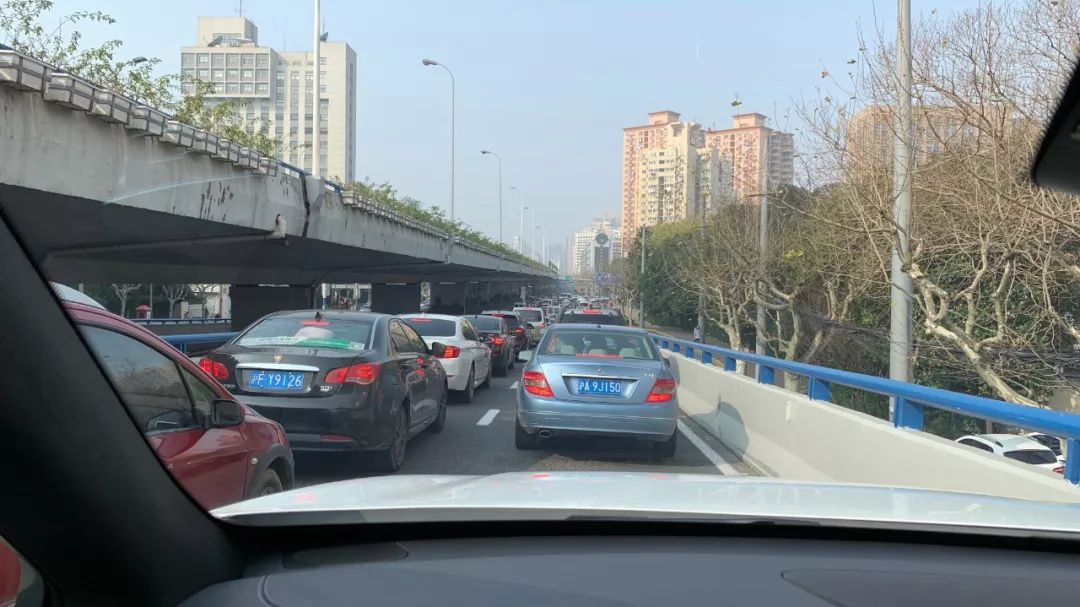
After finishing the work, I filled up with gasoline near the company and prepared to start the journey.
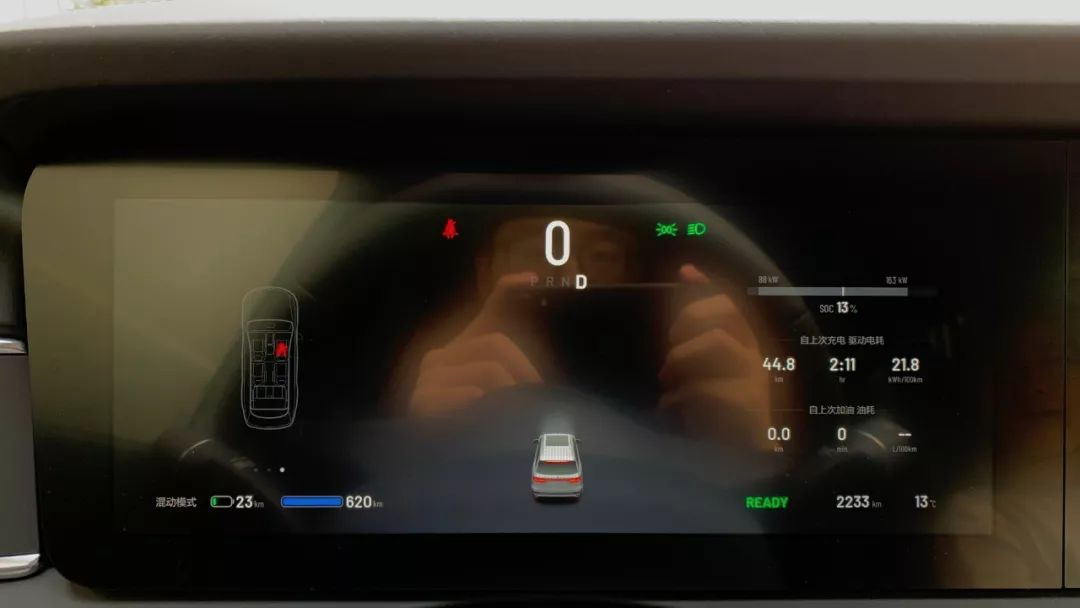 I originally planned to refuel midway and experience the situation of queuing up at service area gas stations during the Spring Festival travel rush. However, many friends wanted to know about the range of ideal ONE in ideal conditions with full tank and full battery. Since this trip was around 400 km, I refueled to full and set off directly with 13% remaining battery. Due to intense driving by my colleague and the vehicle being parked for several days, the remaining battery level was only 13%. Due to time constraints, I did not go to charge specifically.
I originally planned to refuel midway and experience the situation of queuing up at service area gas stations during the Spring Festival travel rush. However, many friends wanted to know about the range of ideal ONE in ideal conditions with full tank and full battery. Since this trip was around 400 km, I refueled to full and set off directly with 13% remaining battery. Due to intense driving by my colleague and the vehicle being parked for several days, the remaining battery level was only 13%. Due to time constraints, I did not go to charge specifically.
I did not use mobile phone navigation this time, but chose the ideal ONE’s car navigation to verify whether the intelligent age can rely on the car system to get rid of mobile phone brackets. On the other hand, the mobile phone still needs to take on some photography work. After upgrading to iOS 13.3, iPhone XR is prone to killing background apps, and I wanted to reduce the workload of the phone as much as possible.
I set off at 2:08pm with the destination of Quzhou City. Amap estimated a total travel time of 5 hours and 14 minutes.
On the twentieth, everyone began to embark on the journey home. The flow of people leaving Shanghai was much greater than usual. Friends who choose to drive home must check the vehicle condition in advance. Here, we also add that the tire pressure of the ideal ONE is 2.6 bar.
Since the promotion of ETC, most of the entrance lanes of the expressway have been changed to ETC exclusive lanes, with only a few manual toll lanes remaining. The test drive car did not have ETC and had to pass through the manual toll lane. The ideal ONE car version of Amap also thoughtfully reminded of the corresponding lane type when approaching the entrance of the toll station.
Although public opinion on ETC is mixed, in my experience, eliminating the Zhejiang-Shanghai mainline toll station greatly improves passage efficiency. In the past, every holiday would be stuck in the Zhejiang-Shanghai mainline toll station for more than half an hour.Considering it was already past 3 PM and I had not eaten lunch yet, I went straight to the Fengjing service area after exiting the highway to fill my stomach and charge the car. This time, the charging spot was quite empty, and there were no weird car owners holding a wooden stick to support the charging gun.
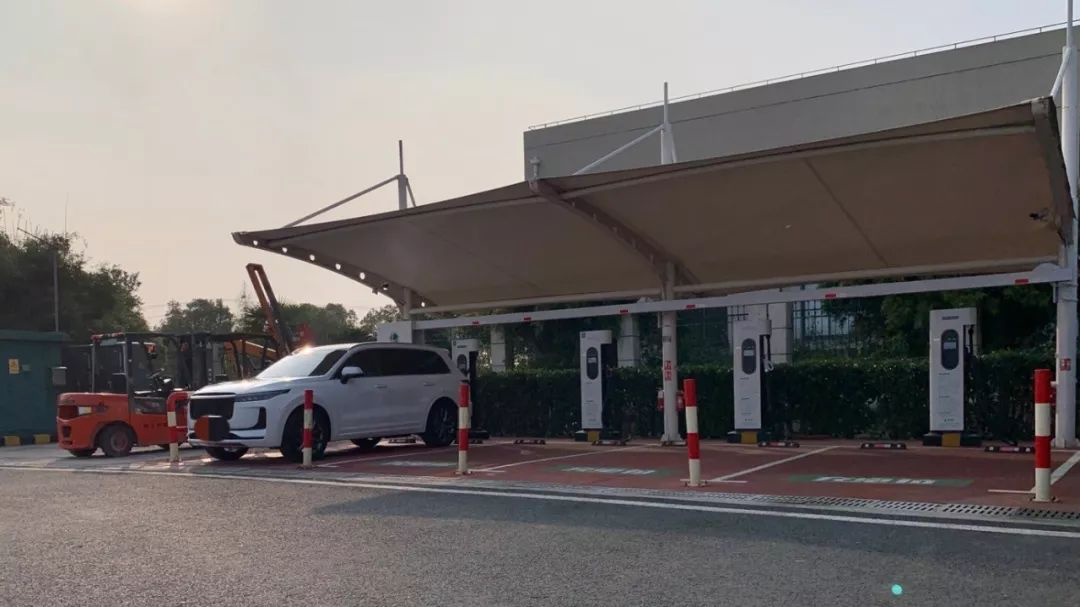
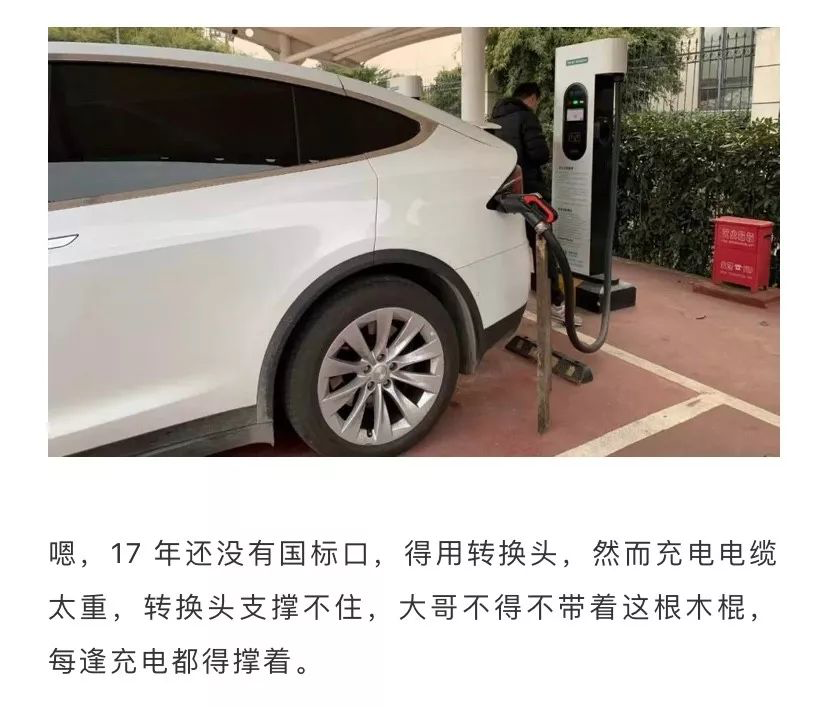
Last year’s experience on my way home
The distance from the company to the first service area was 54 km, which took 54 minutes at an average speed of 60 km/h. The fuel consumption for this distance was 9.4 L/100 km, which is not a low number. However, the vehicle’s battery level increased from 13% to 22%.
This verified my previous assumption to some extent – the relatively constant working conditions on the highway allowed the range extender to operate in a stable working range. Not only could it ensure power output, but also it could use surplus power to charge the battery. Therefore, the ability to maintain battery level on the highway working conditions is not a concern. I am more worried about the vehicle’s ability to maintain battery level in the city under frequent stop-and-go conditions.
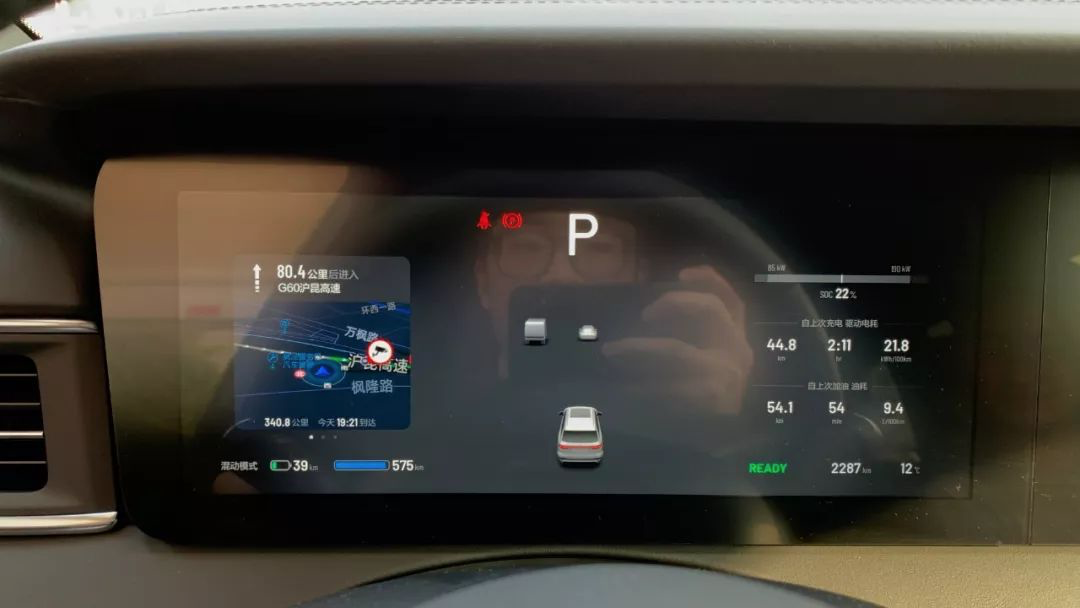
The maximum current of the charging pile at the Fengjing service area is only 120 A, so the charging power is only about 43 kW. This charging power is obviously a bit low for many pure electric cars with a battery capacity of more than 70 kWh, but it is acceptable for the ideal ONE. The charging progress and speed can also be viewed on the mobile app, so I can eat with peace of mind at the service area first.
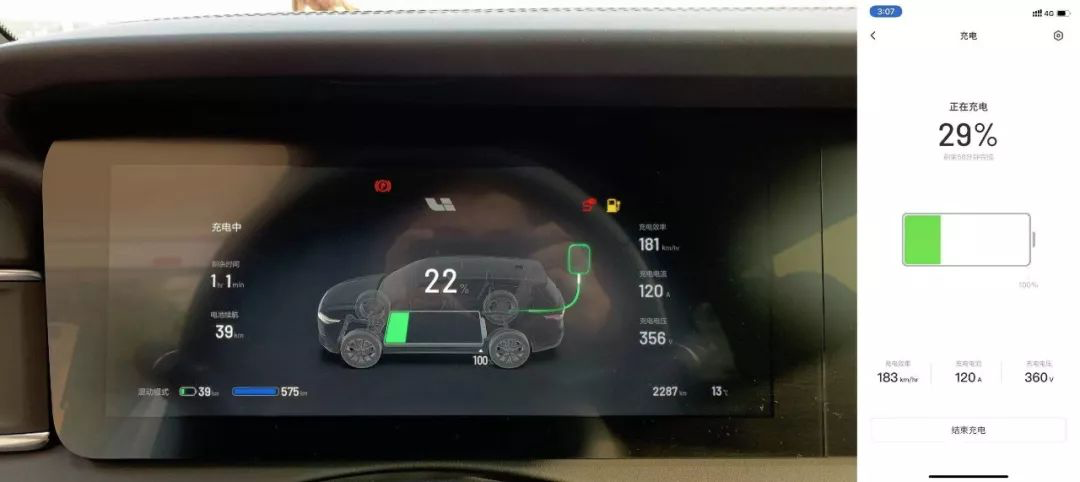
After finishing my meal and returning to the charging pile, I found that a XPeng car owner from Hangzhou was also charging. I chatted briefly with the car owner, who bought a mid-level XPeng G3 car in 2019. Shortly after he bought it, XPeng released the 520 version of the car, which cost about the same. The owner was very angry at that time, but also helpless.
Now after driving XPeng for a while, the owner is quite satisfied. The cruising range is strong, and the cost of using the car is low since he has a charging pile at home. He has driven this car to Shanghai and Changzhou, but now his wife is driving it. The owner said that he should have bought a low-level configuration since the advanced driving assistant in the mid-level configuration is basically unusable in city driving.
Oh, by the way, the car owner also said that he has also ordered a LI ONE and will pick it up in March this year. At that time, he couldn’t wait for the LI ONE and bought a XPeng car first.
Anyway, wish you get your car soon.
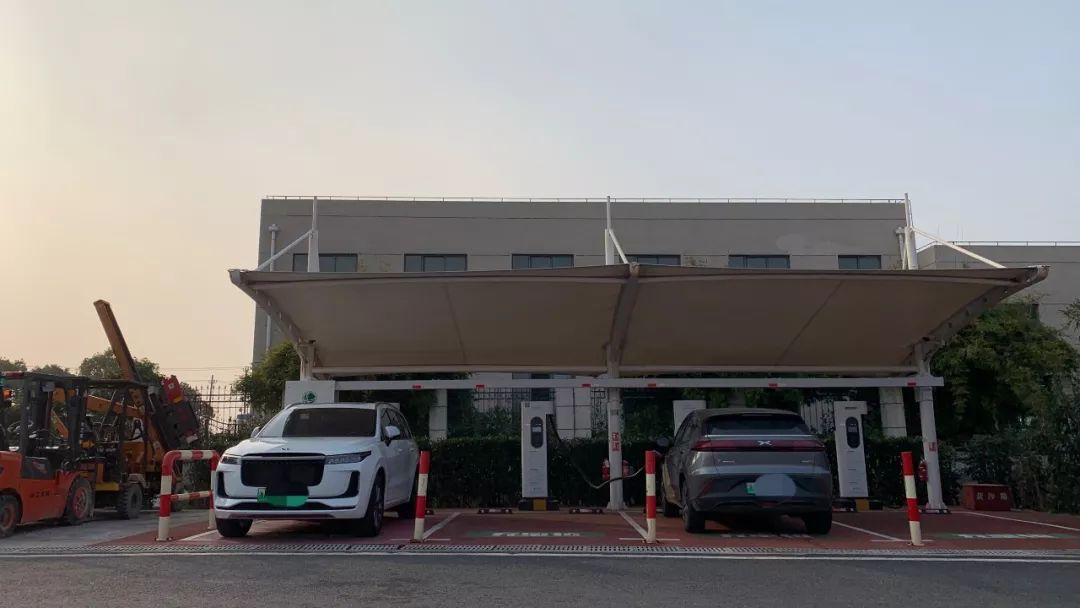
After eating and working for 40 minutes, the power was charged from 22% to 82%. At 3:44 in the afternoon, we continued driving in hybrid mode and are expected to arrive home without any problems.
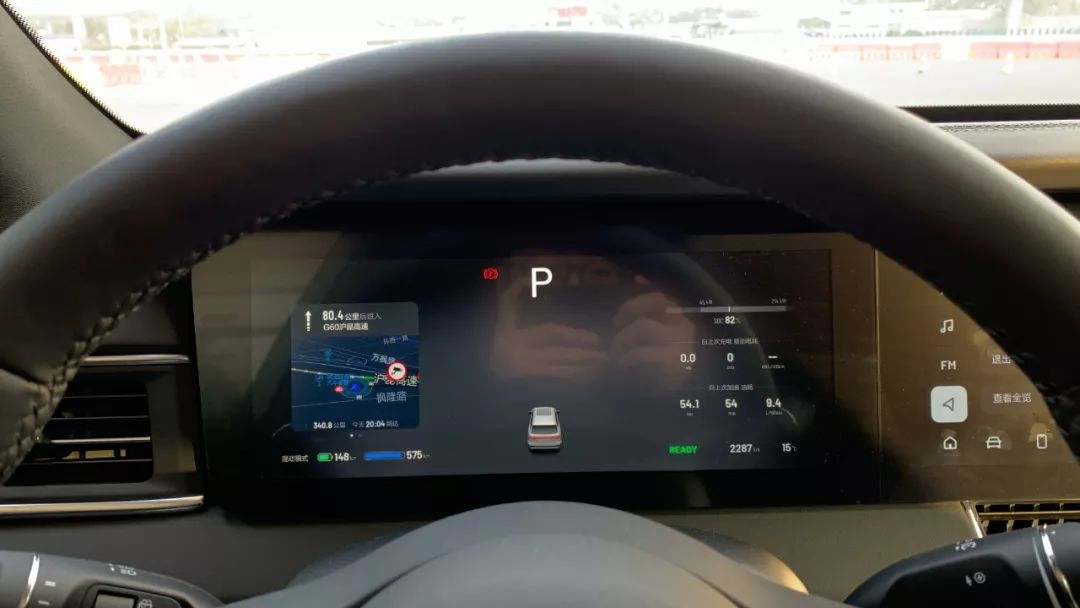
Although there was a lot of traffic during the Spring Festival travel rush, fortunately, we were able to drive at a decent speed. However, it is almost impossible to achieve a speed of 100+ km/h under such road conditions.
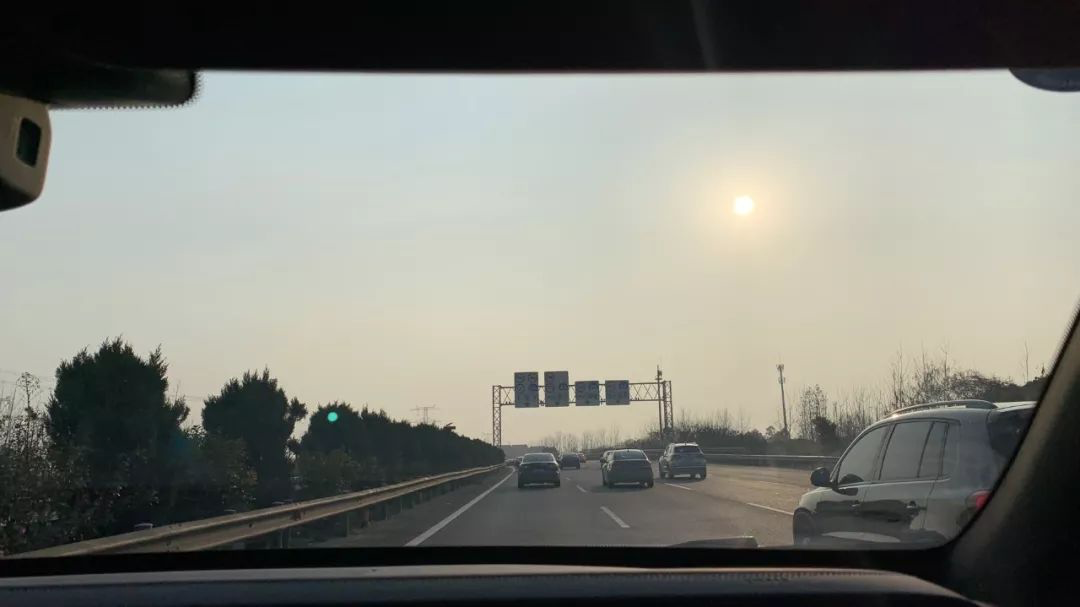
Since there are so many cars on the road, I decided to follow the car in front of me steadily with the help of the assisted driving system. Since the power has been charged to 82%, the vehicle will use the electric drive first even in hybrid mode until the battery falls to 72%, and then the range extender will take over to maintain the power.
By the way, I have a complaint about the navigation display on the LI ONE. The area showing navigation information is too small. Although it is sufficient, it would be better if the large screen could be fully utilized.
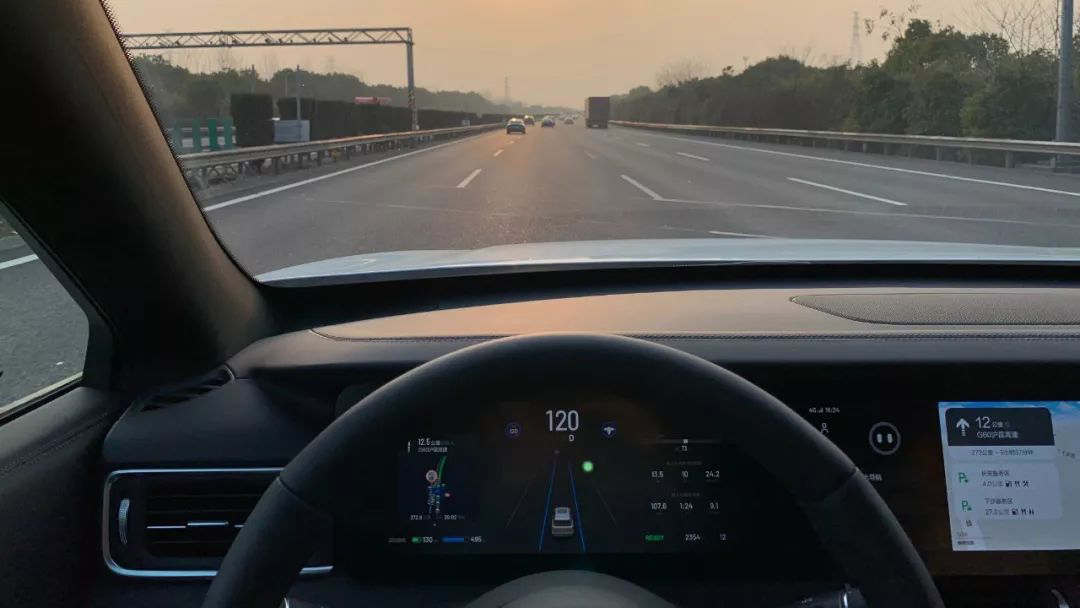
Unfortunately, we ran into a traffic jam after driving 160 km.
Here are some comments on the assisted driving system of the LI ONE. When I tested the system for the first time, I gave it a rating second only to Tesla’s system. This is not because the LI ONE’s system is particularly outstanding, but because the gap between the current market’s assisted driving systems and Tesla’s system is not small. The LI ONE is one of the better ones in the second tier in terms of identifying surrounding vehicles and pedestrians, as well as its lateral control ability during turns.
At present, the assisted driving system of the LI ONE can meet the highway driving needs, and it can greatly reduce the fatigue of drivers during long-distance driving. However, everyone still needs to remain alert during the trip.
In this figure, you can see that since the battery does not need any replenishment, we only need to maintain the current power demand of the vehicle. Therefore, the “fuel consumption since the last refueling” has dropped from 9.4 L/100 km at Fengjing Service Area to 8.7 L/100 km.
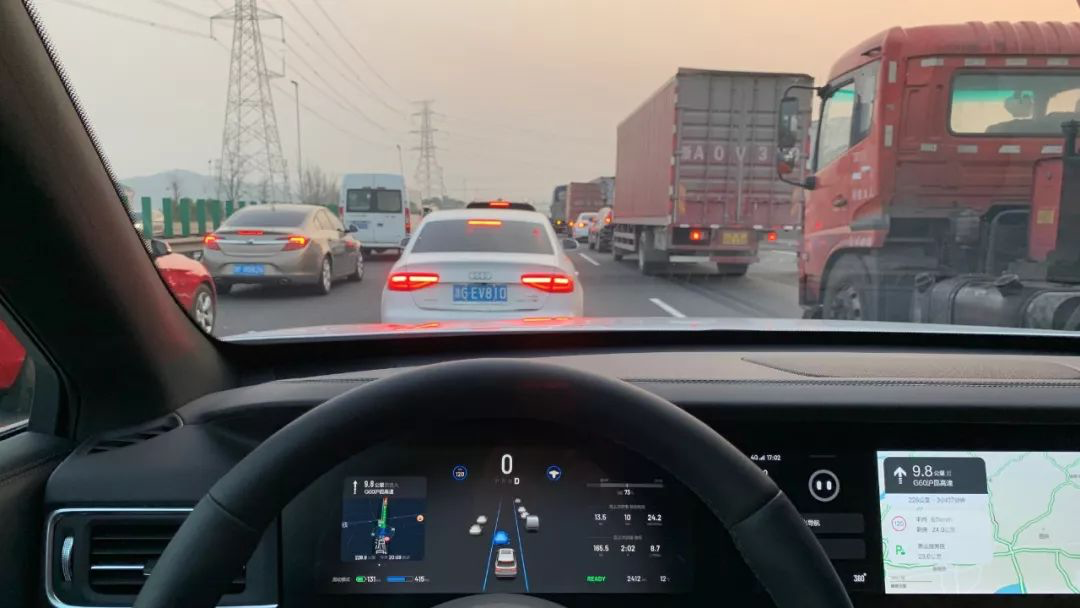
After my friend in the passenger seat got in the car, he watched TV drama for a while on the passenger screen. He felt that the video screen was too small because of the narrow screen, and the viewing experience was not particularly good.
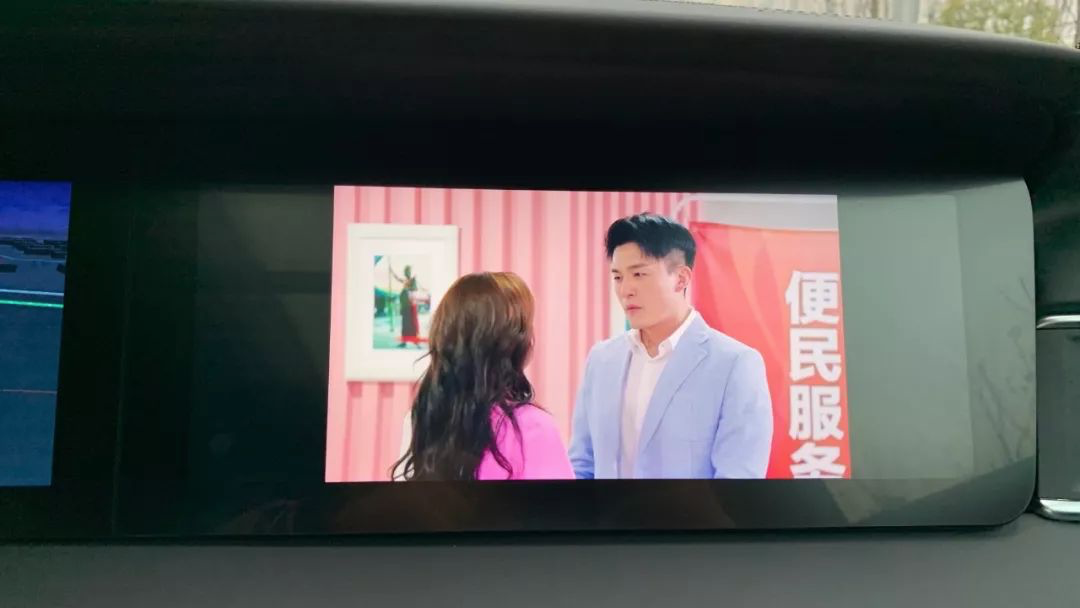
However, he was pleasantly surprised by the comfortable small cushion of the ideal ONE’s passenger headrest. It was because of this small cushion that he felt this was the most comfortable passenger seat he had ever sat in.
After driving for 2-3 hours, the sun went down. I promptly turned on the steering wheel heating and warm air. With the range extender working, the vehicle’s warm air came from the residual heat of the range extender without the need for additional electricity consumption.
But here’s a small suggestion: The wind speed of the ideal ONE’s air conditioning system at level 1 is a bit high. It would be more comfortable if it could be lower.
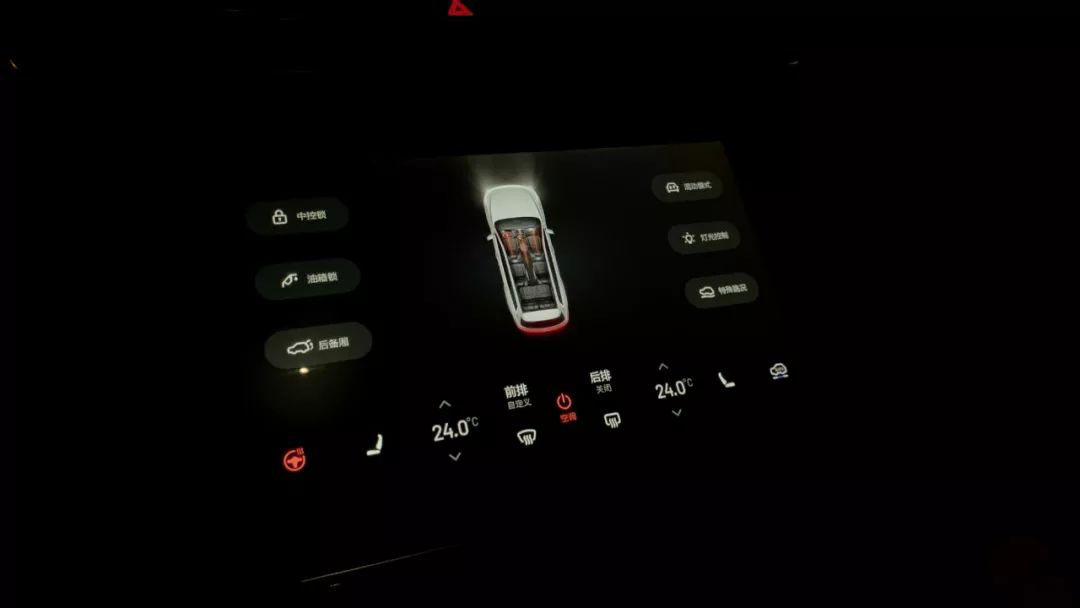
According to the current fuel consumption estimate, it is completely okay to run home with this tank of gas. Therefore, in order to save time, I did not stop at the service area again. Unfortunately, this journey was quite boring. When passing the service area, I could see that almost every gas station had a queue.
For someone like me who can drive more than 4 hours at a stretch and travel more than 1000 km in a day, a fuel-powered car is still more suitable for me. But I am also fond of the smooth and surging driving feel of electric cars. Therefore, the ideal ONE’s range-extended new energy vehicle is currently the most suitable model for me.
After entering the boundary of Jinhua, there were some traffic jams from time to time, which could generally move forward but occasionally got stuck.
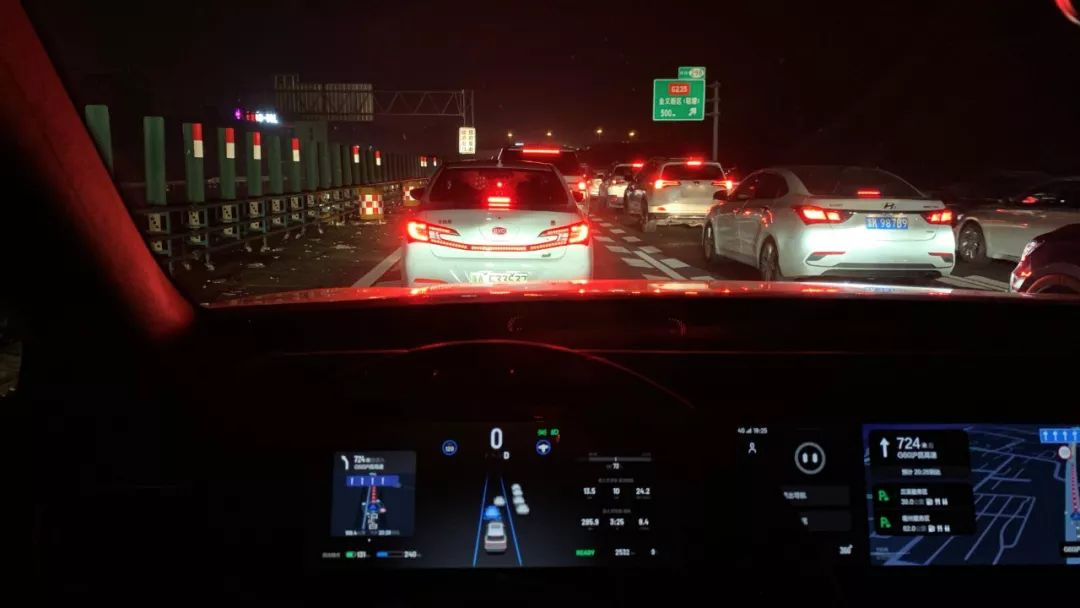
At 8:13 pm, I got off the highway at Quzhou East. The total distance was about 383 km, and I started at 2:08 pm in the afternoon, with a total travel time of 6 hours and 5 minutes, and a driving time of 5 hours and 13 minutes. I only stopped and rested once in the service area.
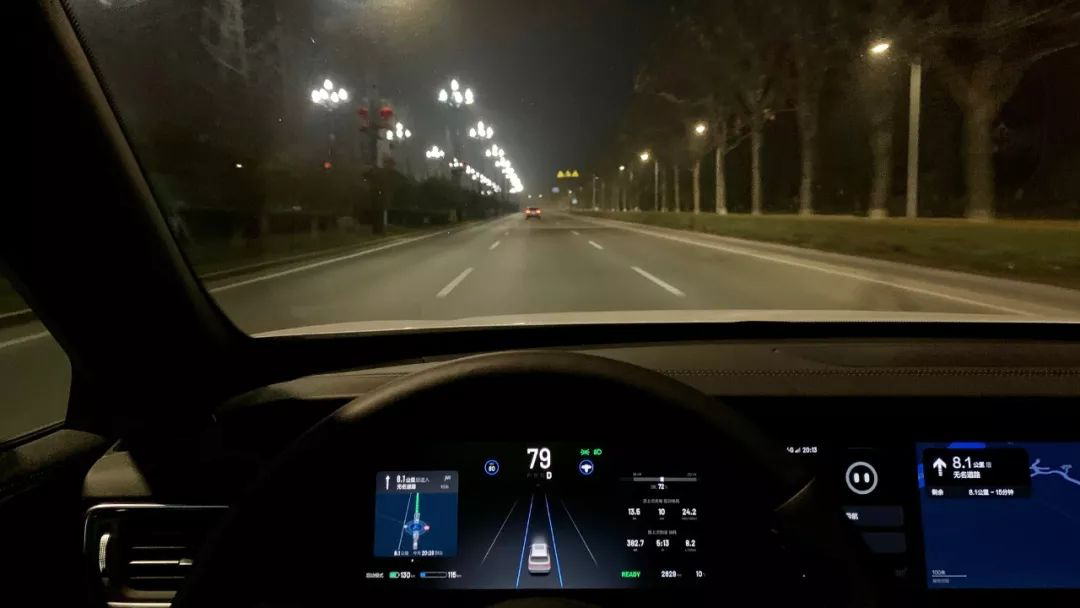 After getting off the highway, I first dropped off my friend at home, and then filled up at a gas station near my house to summarize the trip.
After getting off the highway, I first dropped off my friend at home, and then filled up at a gas station near my house to summarize the trip.
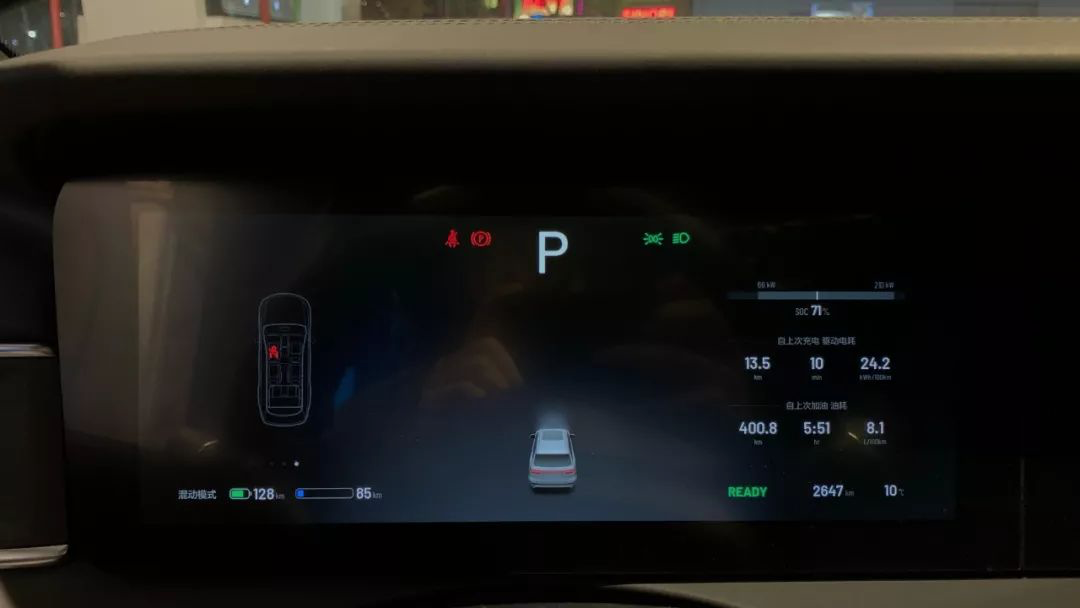
I traveled a total of 414.3 km to reach the gas station, with 13.5 km driven by pure electric power and 400.8 km by fuel power. Due to heavy traffic during the Spring Festival travel rush, the average speed throughout the trip was only 70 km/h.
Let me explain: Although the speed of the car could mostly be maintained at around 100 km/h, there were several times when the road was completely blocked, causing the average speed to drop to 70 km/h. Under these conditions, the fuel consumption for the entire trip was 8.1 L/100 km.
Based on fuel consumption, 35 liters of gasoline were used to travel a total of 400 km, which means the fuel consumption was 8.75 L/100 km. This result was completely within my expectations.
Since the ideal mode of travel was the extended-range mode, the range extender could only generate electricity, which meant that the energy consumption of the extended-range vehicle was not optimal under high-speed conditions. Nevertheless, for a 2.3-ton, 6-seater SUV, this fuel consumption wasn’t high, even if it wasn’t very impressive.
Last year, I drove a NEDC 400 km WmAuto EX5 home. The 400 km journey required three charges, and, including traffic and charging time, took a total of 8 hours and 50 minutes. The rich experiences of the trip left a deep impression on me and taught me some characteristics of electric vehicles in practice. Friends who are interested in my travel experience can check it out here: What it’s Like to Travel 400 km Home for Spring Festival in an Electric Vehicle.
Although this year’s trip went smoothly, the current outbreak of the novel coronavirus pneumonia is still worrying. At this moment, I am at my desk in my Quzhou home, and outside it is drizzling with winter rain. Friends and family are constantly reminding me over WeChat, and the number of confirmed cases is growing in every province across the country.
At this moment, my final thought is: I hope you all can get home safely during the Spring Festival travel rush.
This article is a translation by ChatGPT of a Chinese report from 42HOW. If you have any questions about it, please email bd@42how.com.
